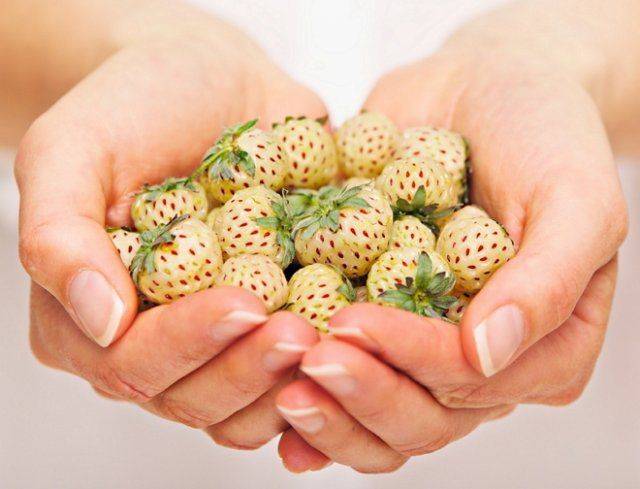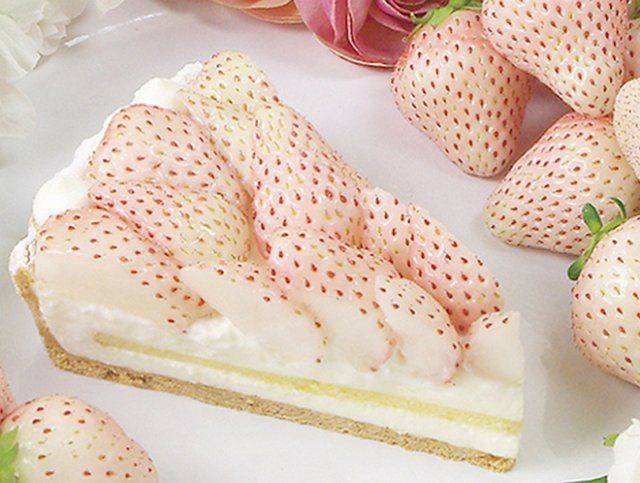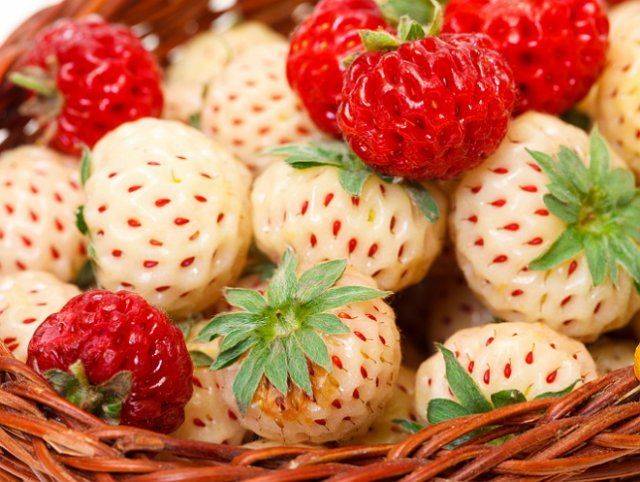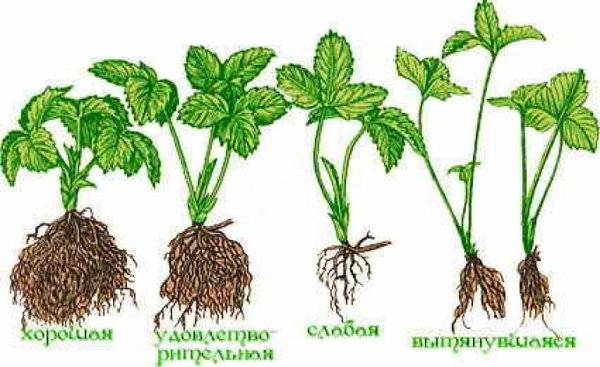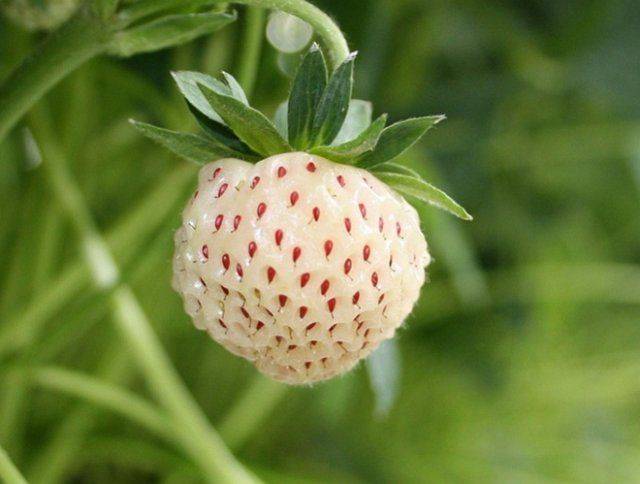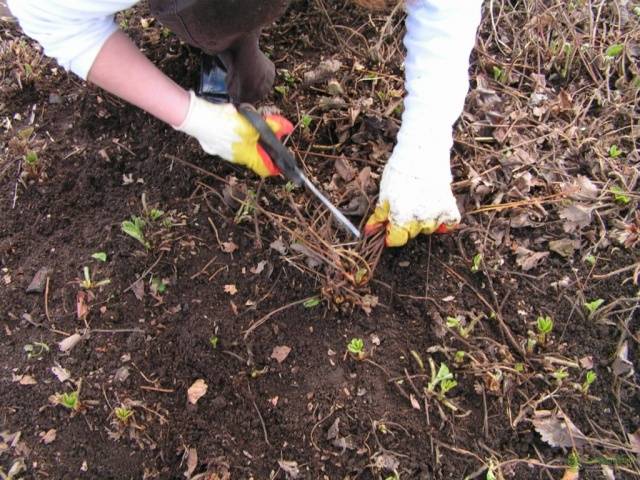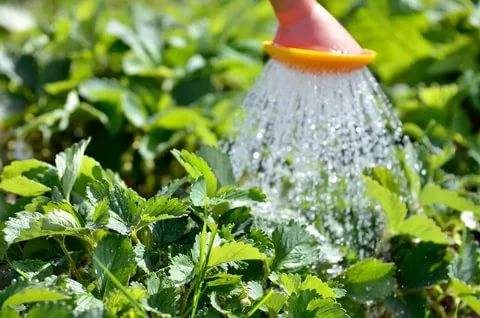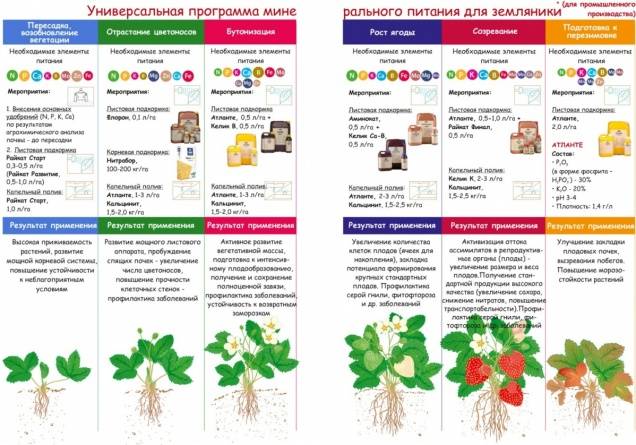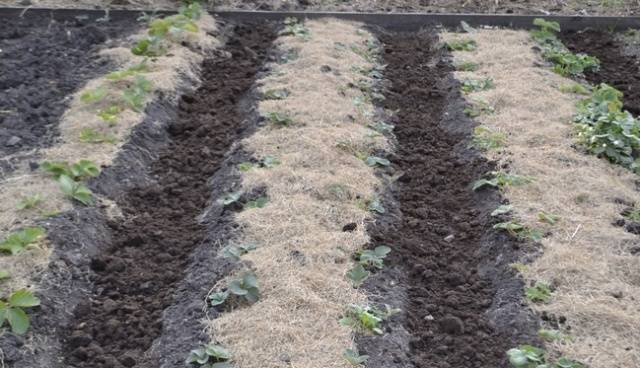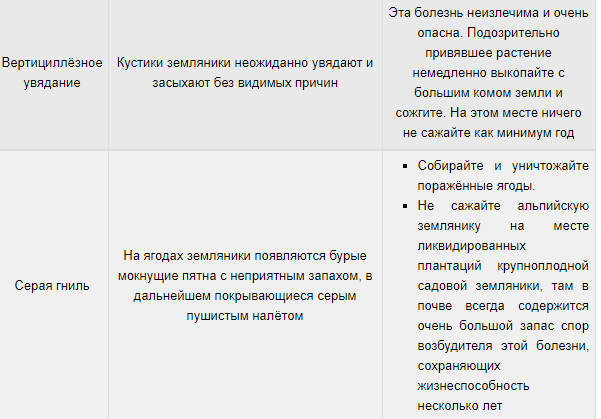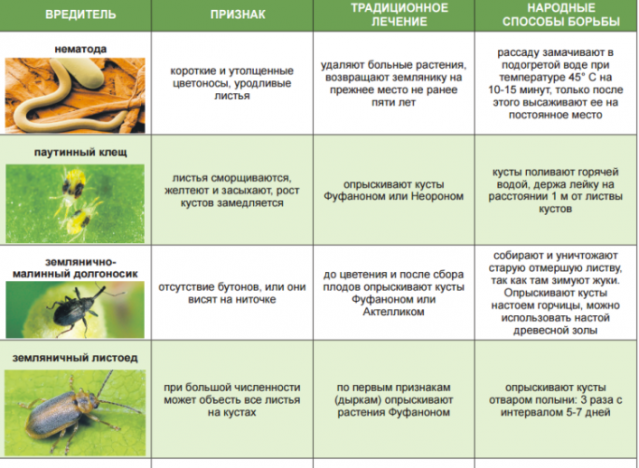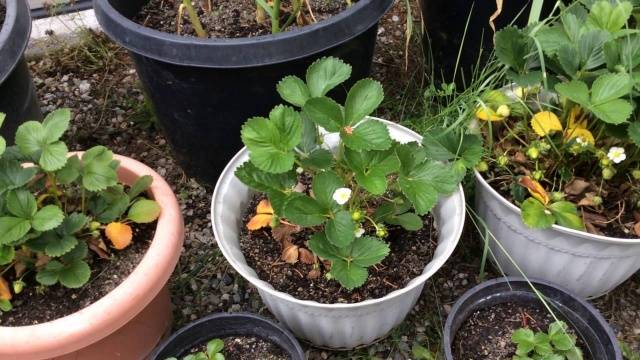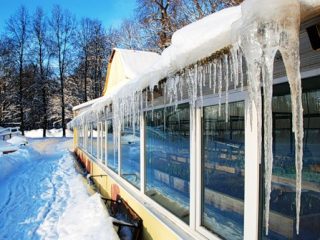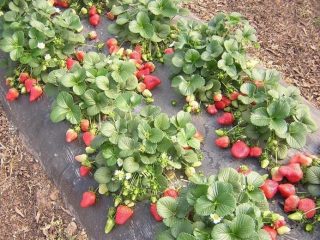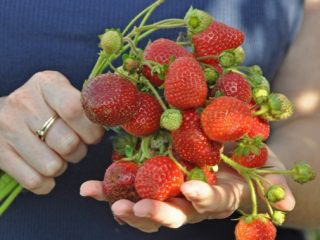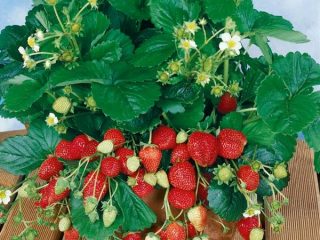Content
Most gardeners associate the word “strawberry” with bright red berries. However, there are varieties that bear fruit of a different color, such as white. The berry is not inferior in sweetness and aroma, it just differs in color. The Pineberry variety is a prominent representative of an unusual culture. Thanks to breeders, any gardener has the opportunity to grow an unusual crop.
Breeding history
Pineberry by its origin is a remontant garden strawberry. The hybrid was obtained by a Dutch breeder named Hans de Jong. For crossing, we took Chilean and Virginia strawberries.
Description
The main difference between Pineberry garden strawberry fruits is their white color. The shape of the berry resembles a regular strawberry. The taste of the fruit is unusual. When chewed, the pulp gives off a distinct pineapple flavor. This is where the second name came from, consisting of two words: pineapple, which means pineapple and berry - berry.
Despite the remontant variety, Pineberry strawberries are small. The diameter of the fruit does not exceed 2.5 cm. Ripe berries change color from green to white. Only the grains in the achenes become red. It is by the color of the seeds that one can guess that the fruit is ripe and that they can already be picked. Externally the berry is very beautiful. The flesh of the fruit is white, sometimes it can take on an orange tint.
Pineberry strawberries ripen from May to July. The yield of the variety per season reaches 1 kg per 1 m2 subject to cultivation in a greenhouse. Plant height varies from 20 to 30 cm. Strawberries love sun and partial shade. In winter, the bushes can withstand frosts down to -25OWITH.
The fruits of the remontant Pineberry variety are considered dessert fruits. The berries are eaten fresh. The fruits are excellent for decorating cakes and pastries. Berries are added to ice cream, cocktails, and yoghurts.
Advantages and disadvantages of the variety
Advantages | Flaws |
The hybrid is resistant to diseases that often affect common strawberry varieties. | Delicate fruits cannot be transported or stored |
Strawberries can be grown next to other varieties of strawberries, since the crop does not cross-pollinate | Low yield, especially when grown openly in the middle zone |
White berries are not pecked by birds | In stormy summers, the berries are quickly affected by rot. |
You can learn more about large-fruited white strawberries from the video presented:
Reproduction methods
At home, it is not possible to propagate remontant Pineberry garden strawberries using seeds. This is a hybrid. Gardeners tried to collect grains from berries. The next year, bushes grew from the seeds, bearing small berries of pink, orange or light red color with deteriorated taste.
Dividing the bush is suitable for the remontant Pineberry variety, but gardeners rarely resort to this method.
The optimal way to propagate garden strawberries is with mustaches. The bush throws out a huge number of layerings, so there will be no problems with planting material. However, if you have to buy mustache seedlings, you will have to pay a decent amount for them. Sellers speculate on the outlandish variety, unreasonably inflating the price.
To propagate Pineberry garden strawberries with tendrils at home, after harvesting the soil is loosened between the rows. The cuttings are spread over the soil, lightly digging in the lower part of the rosettes. By autumn the seedlings will take root. The tendrils are cut off from the mother bush and each plant is transplanted into a garden bed.
Landing
To plant seedlings of Pineberry garden strawberries, dig holes up to 10 cm deep. Each hole is watered with about 0.5 liters of warm water. A seedling is lowered into the hole, the roots are straightened and sprinkled with loose soil. If the plant was bought in cups, it is planted together with a lump of earth without destroying it.
How to choose seedlings
When purchasing seedlings of remontant Pineberry strawberries, pay attention to the foliage. It should be bright green, juicy, without spots or damage.A good seedling has a horn thickness exceeding 7 cm.
The root system of the plant must be developed, at least 7 cm long. The exposed roots are fluffy in the form of a lump. If the seedling is sold in a cup, it must be removed for inspection. Good roots should entwine the entire lump of earth.
Site selection and soil preparation
The remontant Pineberry variety loves warmth. In Holland, these strawberries are grown indoors. For the middle zone, open cultivation is not preferable, but you can choose a sunny, open area on the south side. However, this choice can lead to a small problem. In direct sunlight, the white berries of remontant strawberries take on a pink tint. To get white fruits, it is optimal to choose a slightly shaded area, but well warmed by the sun. You can simply build an agrofibre shade over the garden bed.
Pineberry garden strawberries have no special soil requirements. Seedlings take root in soil with an acidity level of 5.0 to 6.5. Before planting strawberries, the plot is dug up to a depth of 30 cm, adding 5 kg of humus and 40 g of mineral fertilizer per 1 m2.
Planting scheme
The remontant variety Pineberry throws out a lot of tendrils. Bushes need more space to grow. For planting, a scheme is suitable where a gap of 30 cm is maintained between plants. The row spacing is about 45 cm.
Many sources and dishonest sellers claim that the variety is self-fertile. Pineberry actually requires cross-pollination since the plant only has female flowers. A bed of strawberries must be placed close to another variety of strawberry.
Care
The procedure for caring for unusual white strawberries is the same as for ordinary red strawberries.
Care in spring
In the spring, the bed with remontant Pineberry strawberries is cleared of winter shelter. Trim damaged leaves and remaining old peduncles. The soil between the rows is loosened to a depth of 3–5 cm so as not to damage the roots. The bushes are watered with warm water, dissolving 1 g of copper sulfate or 1 g of potassium permanganate into 1 bucket.
With the appearance of the ovary, garden strawberry plantings are watered with a solution of boric acid at the rate of 10 g of powder per 20 liters of water. Fertilizers include a solution of mullein or bird droppings, as well as mineral complexes. During flowering, potassium-phosphorus fertilizer is applied or watered with a solution of wood ash at the rate of 2 cups per 1 bucket of water.
Watering and mulching
Remontant strawberries of the Pineberry variety love watering. The intensity is determined by weather conditions. The frequency of watering is increased with the appearance of buds and while the berries are pouring. A couple of days before harvesting, it is advisable not to pour water under the strawberries. The berries are already very tender, but the abundance of moisture will make them watery.
To preserve moisture and also reduce growth intensity weed, perform soil mulching. Sawdust, peat or fine straw are suitable. Thanks to mulch, the berries will not be smeared with soil during rain or watering.
Fertilizing by month
Garden strawberries, like ordinary strawberries, love to be fertilized with organic matter and mineral complexes. For Pineberry, a minimum of three feedings must be applied per season: in early spring, before flowering, and during the ovary period. In order for the bushes to gain strength for the winter, strawberries are fertilized after harvesting.
Preparing for winter
The bushes can withstand frosts down to –25OC, but still a remontant variety in its homeland is considered to be for greenhouse purposes.For the winter, the Pineberry plantation will have to be covered with straw mats or spruce branches.
Diseases and control methods
Of the common diseases, Pineberry is rarely damaged by verticillium wilt, but often by gray rot, especially in rainy summers.
Pests and ways to combat them
For the remontant variety of garden strawberries, only birds are not pests. Birds are not attracted to the white color of the berries. However, ants, slugs, snails, mites, leaf beetles and other insects cause damage to the crop.
Features of growing in pots
Remontant strawberries are not self-fertile. There is no point in growing Pineberry in pots if we are talking about a room. Outside, you can plant strawberries in flower pots and build a high bed out of them. You just need to place it near a plantation of another strawberry variety for cross-pollination.
Conclusion
The success of high yields of Pineberry can only be optimally achieved in greenhouse conditions. In an open area, it is wise to plant a small plantation for variety.
